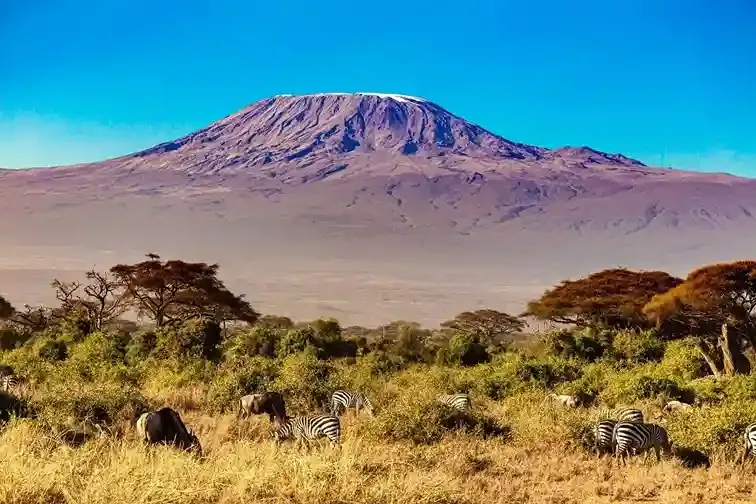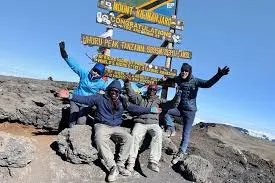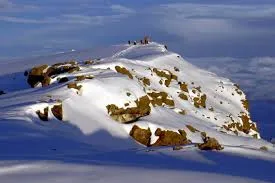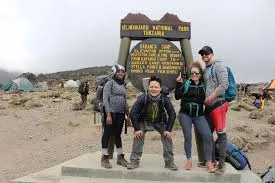Kilimanjaro Volcano Facts: Is It Still Active?
Mount Kilimanjaro, Africa’s highest peak, is a geological wonder and a bucket-list destination for adventurers. But is it still an active volcano? With Capable Africa Tours, explore key Kilimanjaro volcano facts, from its dormant status to its fascinating geological history. Learn how its volcanic origins shape the trekking experience, and get practical tips for a safe climb to Uhuru Peak. Dive into this guide to uncover everything you need to know about Kilimanjaro’s volcanic nature.
Plan Your Kilimanjaro Adventure
Is Mount Kilimanjaro an Active Volcano?
Mount Kilimanjaro is not an active volcano—it’s classified as dormant. This means it hasn’t erupted in recorded history, with its last significant eruption occurring around 360,000 years ago. However, minor fumarole activity (gas emissions) has been observed in the Kibo crater, indicating some residual heat beneath the surface. For climbers with Capable Africa Tours, this poses no risk, as Kilimanjaro is closely monitored, and its volcanic activity is negligible. Below, we dive into the key facts about Kilimanjaro’s volcanic nature to help you understand its geology before your trek.
Key Kilimanjaro Volcano Facts
- Volcano Type: Stratovolcano, built from layers of lava, ash, and volcanic rock.
- Height: 5,895 m (19,341 ft), Africa’s tallest peak and the world’s highest free-standing mountain.
- Cones: Three volcanic cones—Kibo (active summit), Mawenzi, and Shira.
- Last Eruption: Approximately 360,000 years ago, with minor fumaroles in Kibo’s crater today.
- Geological Age: Formed 3 million years ago in the East African Rift.
- UNESCO Status: Part of Kilimanjaro National Park, a UNESCO World Heritage Site.
Geological History of Mount Kilimanjaro
Kilimanjaro’s formation began about 3 million years ago due to tectonic activity in the East African Rift. Its three cones—Shira, Mawenzi, and Kibo—developed through successive eruptions. Shira collapsed around 500,000 years ago, forming a caldera, while Mawenzi eroded into jagged peaks. Kibo, the youngest cone, remains the highest and contains the Reusch Crater and ash pit, visible to climbers. This volcanic history shapes the diverse landscapes you’ll traverse with Capable Africa Tours, from lava plateaus to ash fields.
Timeline of Kilimanjaro’s Formation
- 3 Million Years Ago: Volcanic activity begins, forming the Shira cone.
- 1 Million Years Ago: Mawenzi cone forms through eruptions.
- 500,000 Years Ago: Shira collapses, creating a caldera; Kibo begins forming.
- 360,000 Years Ago: Kibo’s last major eruption shapes the current summit.
- Present Day: Kibo remains dormant with minor fumarole activity.
Geological Significance
Kilimanjaro is a critical part of the East African Rift, a tectonic zone where the African continent is slowly splitting. Its stratovolcano structure, with layers of lava and ash, makes it a geological marvel. The mountain’s height and isolation also create unique microclimates, supporting diverse ecosystems from rainforests to arctic zones, which you’ll experience on your trek with Capable Africa Tours.
Volcanic Features on Kilimanjaro
Climbing Kilimanjaro with Capable Africa Tours offers a front-row seat to its volcanic features. The Kibo cone, home to Uhuru Peak, features the Reusch Crater, a 900-meter-wide volcanic crater, and a central ash pit. Lava flows and volcanic rocks are visible along routes like Lemosho and Machame, while the Shira Plateau showcases ancient caldera remnants. These features add a thrilling geological dimension to your climb.
Notable Volcanic Landmarks
- Reusch Crater: A 900 m wide crater in Kibo, accessible on summit day.
- Ash Pit: A 350 m deep volcanic feature inside Reusch Crater, with minor fumaroles.
- Shira Plateau: A collapsed caldera with sweeping views and volcanic rock formations.
- Lava Tower: A 100 m tall volcanic rock formation on the Lemosho and Machame routes.
- Mawenzi Peaks: Eroded volcanic remnants offering dramatic vistas.
Kilimanjaro’s Volcanic Stats
| Metric | Value |
|---|---|
| Height (Kibo Summit) | 5,895 m / 19,341 ft |
| Base Diameter | ~40 km / 25 mi |
| Reusch Crater Diameter | 900 m / 2,953 ft |
| Ash Pit Depth | 350 m / 1,148 ft |
| Age of Formation | ~3 million years |
| Last Major Eruption | ~360,000 years ago |
Explore Kilimanjaro’s Volcanic Wonders
Watch this video to discover Mount Kilimanjaro’s volcanic features with Capable Africa Tours. See the Reusch Crater, Shira Plateau, and more on an unforgettable trek.
Is Climbing Kilimanjaro Safe Given Its Volcanic Nature?
Kilimanjaro’s dormant status means there are no significant volcanic risks for climbers. The primary challenges are altitude sickness, weather, and physical endurance, which Capable Africa Tours mitigates with expert guides, gradual acclimatization, and safety equipment like oxygen tanks. The mountain is monitored for seismic activity, and no signs of eruption risk have been detected in modern times.
Safety Measures with Capable Africa Tours
- Experienced Guides: 1 guide per 2 trekkers, trained in altitude safety.
- Acclimatization: Itineraries designed for gradual ascent (7–8 days).
- Safety Gear: Oxygen tanks, pulse oximeters, and first aid kits included.
- Weather Monitoring: Daily updates to avoid storms or extreme conditions.
- Emergency Plans: Evacuation routes and protocols for rapid descent.
How Kilimanjaro’s Volcanic Nature Shapes Your Climb
Kilimanjaro’s volcanic terrain creates diverse landscapes that enhance the trekking experience. Routes like Lemosho and Machame traverse lava fields, ash slopes, and plateaus, offering stunning views and unique geological insights. The gradual slopes of the Shira Plateau and the rugged terrain of Kibo’s summit add variety to your adventure with Capable Africa Tours.
Impact on Popular Routes
- Lemosho Route: Crosses the Shira Plateau, with lava fields and volcanic rock formations.
- Machame Route: Features the Lava Tower and Barranco Wall, shaped by volcanic activity.
- Rongai Route: Offers views of Mawenzi’s eroded volcanic peaks.
- Marangu Route: Passes through volcanic ash fields near Kibo’s summit.
Preparing for Your Kilimanjaro Trek
While Kilimanjaro’s volcanic status poses no risk, preparing for the climb is crucial. Focus on physical fitness, altitude training, and proper gear. Capable Africa Tours provides detailed training plans and gear rentals to ensure you’re ready for the challenge.
Preparation Tips
- Cardio Training: Run or cycle 4–5 times weekly for 45–60 minutes.
- Strength Exercises: Squats, lunges, and core workouts for steep terrain.
- Altitude Practice: Train at elevations above 2,500 m if possible.
- Gear Checklist: Waterproof boots, layered clothing, trekking poles, and a -15°C sleeping bag.
- Mental Prep: Practice pacing and hydration to stay resilient.
Gear Rental with Capable Africa Tours
Rent high-quality gear like sleeping bags, down jackets, and trekking poles from Capable Africa Tours to save space and ensure comfort. Learn more about our rentals.
Ready to Explore Kilimanjaro’s Volcanic Wonders?
Join Capable Africa Tours to climb Mount Kilimanjaro and witness its stunning volcanic features, from the Reusch Crater to the Shira Plateau. Our expert guides, eco-friendly practices, and 90% summit success rate ensure a safe and unforgettable adventure. Book now to secure your spot!
- 90% summit success rate with 8-day itineraries
- Expert guides trained in altitude and volcanic terrain
- Eco-conscious treks supporting local communities
- Gear rentals for a hassle-free climb
- All-inclusive packages with meals and transfers
Limited spots available for Kilimanjaro treks—book now to conquer Africa’s highest peak!
Plan Your Trek Now


